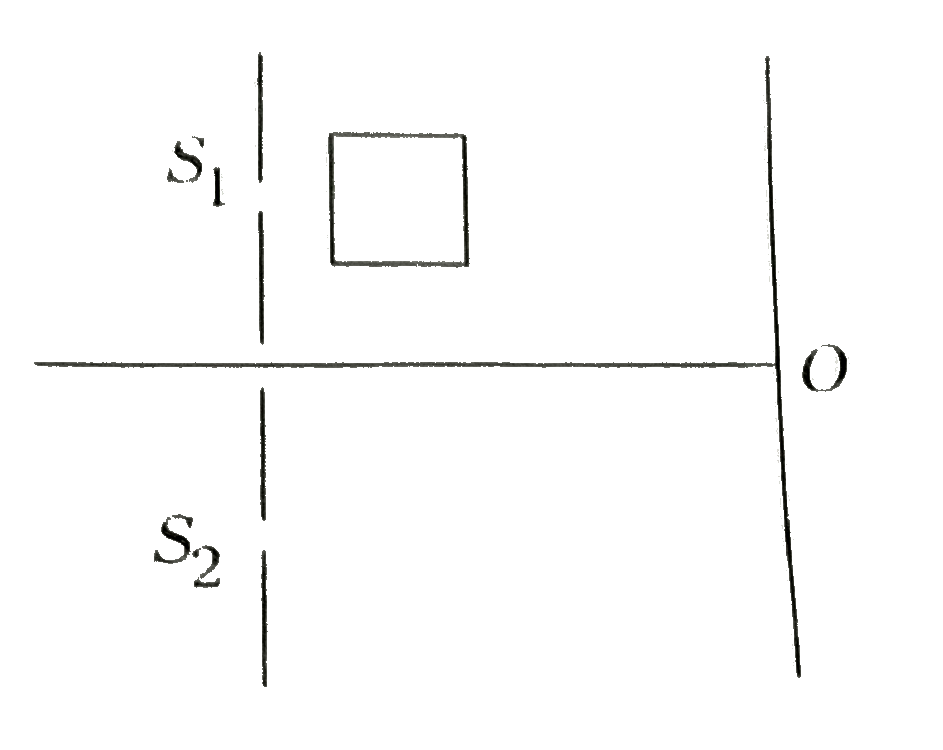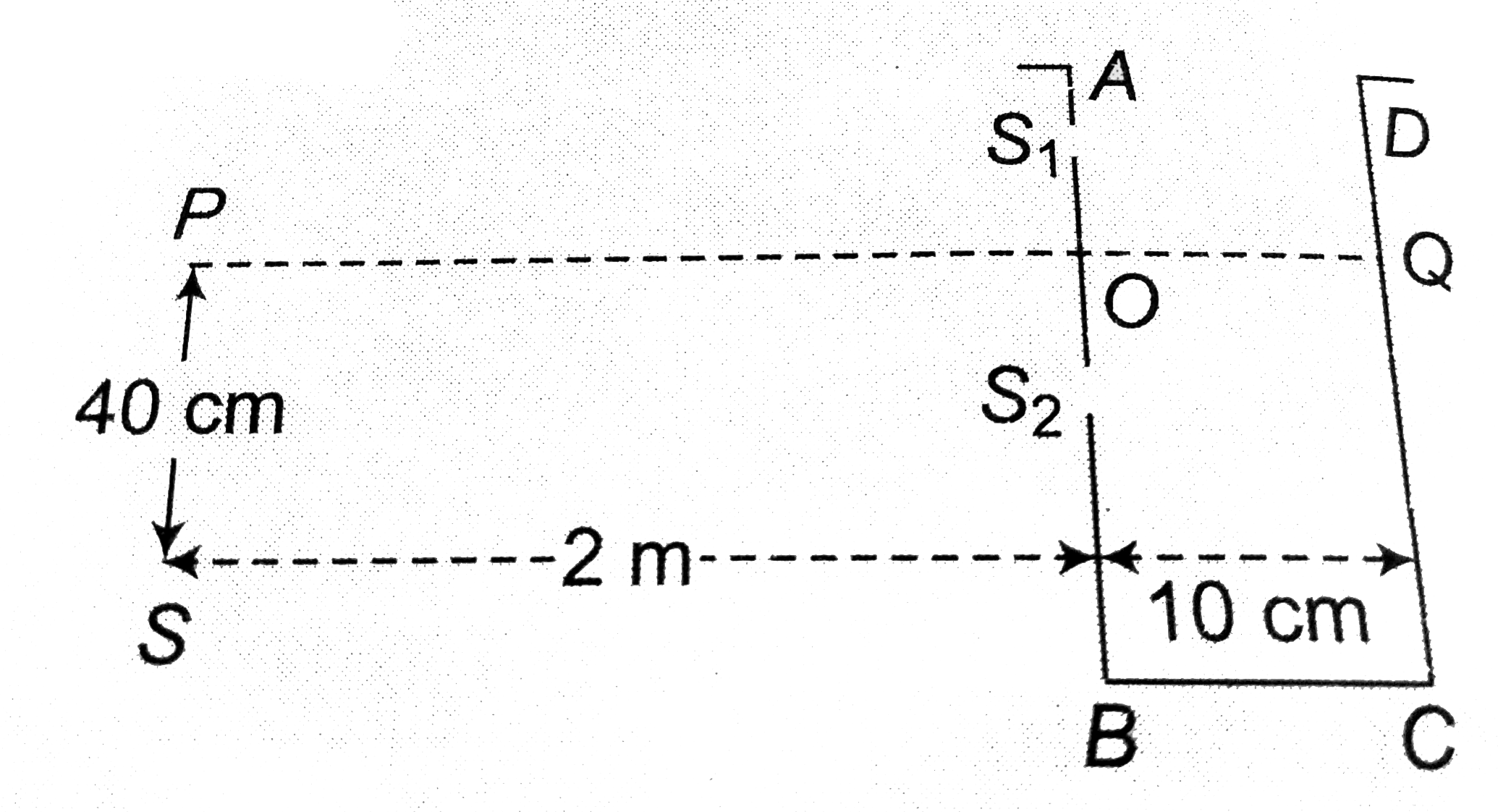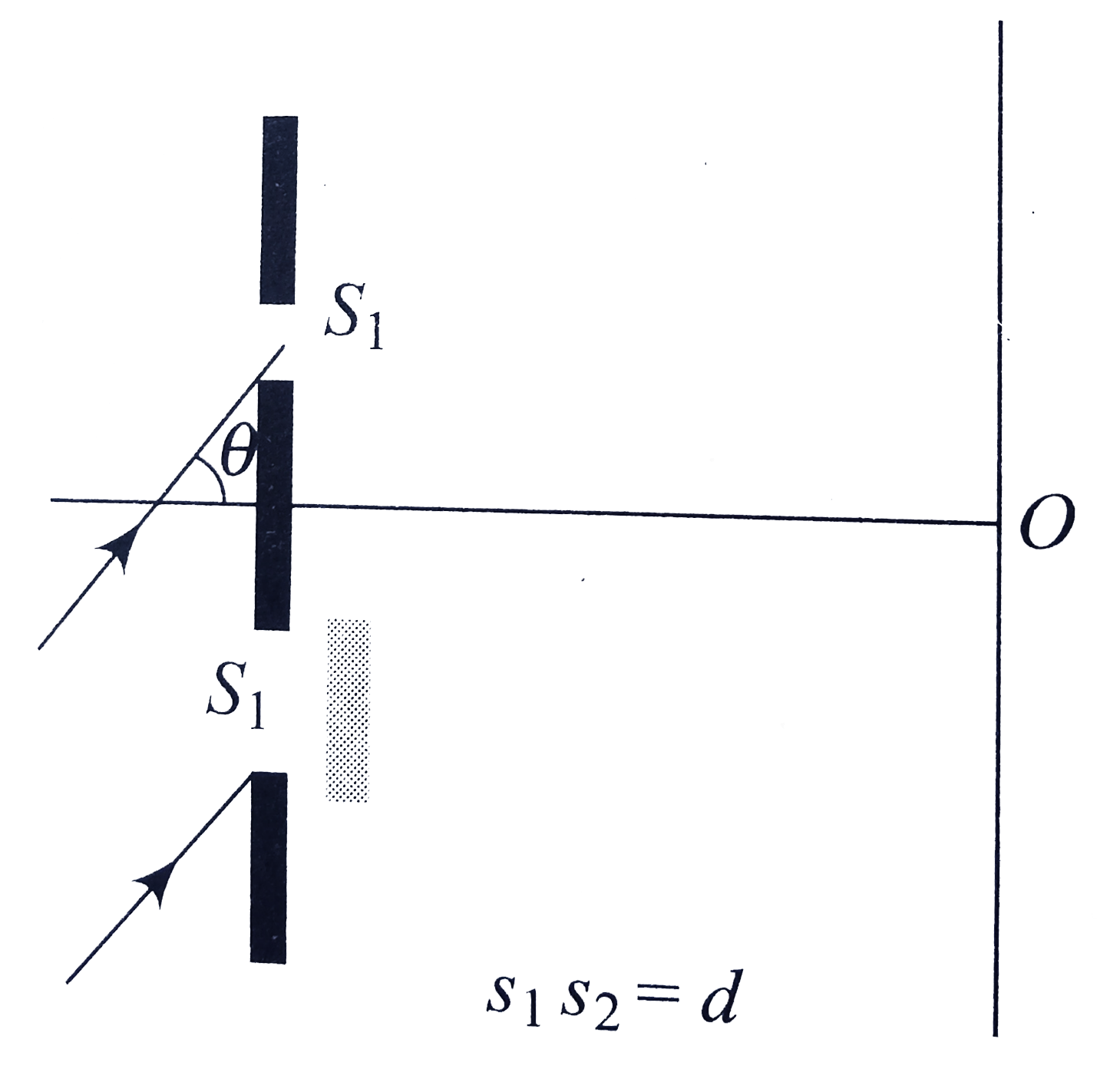Assertion: White light is used in YDSE. Now, a glass slab is inserted in front of the slit S1. Then, red fringe will shift less (in upward direction) compared to violet.
Reason: Refractive index for violet colour will be more.
(a)If both Assertion and Reason are true and the Reason is correct explanation of the Assertion.
(b)If both Assertion and Reason are true and the Reason is not the correct explanation of the Assertion.
(c) If Assertion is true, but the Reason is false.
(d) If Assertion is false, but the Reason is true.
The correct Answer is:D
To solve the problem, we need to analyze the assertion and the reason provided in the question regarding Young's Double Slit Experiment (YDSE) with the introduction of a glass slab.
1. Understanding the Assertion:
The assertion states that when a glass slab is inserted in front of slit S1, the red fringe will shift less (in the upward direction) compared to the violet fringe.
2. Analyzing the Effect of the Glass Slab:
When a glass slab of thickness t and refractive index μ is placed in front of one of the slits, it causes a phase change in the light passing through it. The shift in fringe position can be calculated using the formula:
Shift=(μ−1)tDd
where D is the distance from the slits to the screen, and d is the distance between the slits.
3. Dependence on Wavelength:
The shift caused by the glass slab is independent of the wavelength of light. This means that both red and violet light will experience the same amount of shift due to the glass slab.
4. Refractive Index and Wavelength:
It is known that the refractive index μ of a medium is inversely proportional to the wavelength of light. Therefore, violet light (which has a shorter wavelength) will have a higher refractive index compared to red light (which has a longer wavelength). This means:
μr<μv
where μr is the refractive index for red light and μv is for violet light.
5. Conclusion on the Assertion and Reason:
Since the shift is independent of wavelength, the assertion that the red fringe will shift less than the violet fringe is false. However, the reason provided is true because the refractive index for violet light is indeed greater than that for red light.
Final Answer:
- The assertion is false, and the reason is true. Therefore, the correct answer is option D.
The assertion states that when a glass slab is inserted in front of slit S1, the red fringe will shift less (in the upward direction) compared to the violet fringe.
When a glass slab of thickness t and refractive index μ is placed in front of one of the slits, it causes a phase change in the light passing through it. The shift in fringe position can be calculated using the formula:
Shift=(μ−1)tDd
where D is the distance from the slits to the screen, and d is the distance between the slits.
The shift caused by the glass slab is independent of the wavelength of light. This means that both red and violet light will experience the same amount of shift due to the glass slab.
It is known that the refractive index μ of a medium is inversely proportional to the wavelength of light. Therefore, violet light (which has a shorter wavelength) will have a higher refractive index compared to red light (which has a longer wavelength). This means:
μr<μv
where μr is the refractive index for red light and μv is for violet light.
Since the shift is independent of wavelength, the assertion that the red fringe will shift less than the violet fringe is false. However, the reason provided is true because the refractive index for violet light is indeed greater than that for red light.
- The assertion is false, and the reason is true. Therefore, the correct answer is option D.
Topper's Solved these Questions
- BOOK - DC PANDEY ENGLISHCHAPTER - INTERFERENCE AND DIFFRACTION OF LIGHTEXERCISE - Level 1 Objective11videos
INTERFERENCE AND DIFFRACTION OF LIGHT
- BOOK - DC PANDEY ENGLISHCHAPTER - INTERFERENCE AND DIFFRACTION OF LIGHTEXERCISE - Objective question2videos
INTERFERENCE AND DIFFRACTION OF LIGHT
- BOOK - DC PANDEY ENGLISHCHAPTER - INTERFERENCE AND DIFFRACTION OF LIGHTEXERCISE - Exercise 32.26videos
INTERFERENCE AND DIFFRACTION OF LIGHT
- BOOK - DC PANDEY ENGLISHCHAPTER - GRAVITATIONEXERCISE - All Questions135videos
GRAVITATION
- BOOK - DC PANDEY ENGLISHCHAPTER - MAGNETIC FIELD AND FORCESEXERCISE - Medical entrance s gallery59videos
MAGNETIC FIELD AND FORCES
Similar Questions
Assertion In the YDSE set up shown in figure a glass slab is inserted in front of the slit S1 as shown in figure Then zero order maxima (where path difference =0) will lie above point O.
Reason Glass slab will produce an extra path difference in the path of the ray passing through S1
 View Solution
View SolutionAssertion (A) : In YDSE, as shown in figure, central bright frings is formed at O If a liquid is filled between plane of slits and screen the central bright fringes is shifted in upward direction.
Reasoning (R ) : Path difference at O will increase, so y-coordinate will increase.
 View Solution
View SolutionAssertion: If white light is used in place of monochromatic light in YDSE, then central point is white, although at other places coloured fringes will be obtained.
Reason: At centre, path difference is zero for all wavelengths. Hence, all wavelengths will interfere constructively.View SolutionWhite light is used in a Young's double slit experiment. Find the minimum order of the violet fringe (λ=400nm) which overlaps with a red fringe(λ=700nm).
View SolutionInterference fringes were produced in Young's double-slit experiment using light of wavelength 5000Å. When a film of thickness 2.5×10−3cm was placed in front of one of the slits, the fringe pattern shifted by a distance equal to 20 fringe-widths. The refractive index of the material of the film is
View SolutionIn YDSE when slab of thickness t and refractive index μ is placed in front of one slit then central maxima shifts by one fringe width. Find out t in terms of λ and μ.
View SolutionIf white light is used in Young's double -slit experiment
a) bright white fringe is formed at the centre of the screen
b) fringes of different colours are observed on both sides of central fringe clearly only in the first order
c) the first order violet fringes are closer to the centre of the screen than the first order red fringes
d) the first order red fringes are closer to the centre of the screen than the first order violet fringesView SolutionA vessel ABCD of 10cm width has two small slits S1 and S2 sealed with idebtical glass plates of equal thickness. The distance between the slits is 0.8mm. POQ is the line perpendicular to the plane AB and passing through O, the middle point of S1 and S2. A monochromatic light source is kept at S,40cm below P and 2m from the vessel, to illuminate the slits as shown in the figure. Calculate the position of the central bright fringe on the other wall CD with respect of the line OQ. Now, a liquid is poured into the vessel and filled up to OQ. The central bright fringe is fiund to be at Q. Calculate the refractive index of the liquid.
 View Solution
View SolutionIn YDSE, find the thickness of a glass slab (μ=1.5) which
should be placed in front of the upper slit S1 so that the central maximum now
lies at a point where 5th bright fringe was lying earlier (before inserting the
slab). Wavelength of light used is 5000Å.View SolutionA monochromatic beam of light fall on YDSE apparatus at some angle (say θ) as shown in figure. A thin sheet of glass is inserted in front of the lower slit s2. The central bright fringe (path difference =0) will be obtained
 View Solution
View Solution

